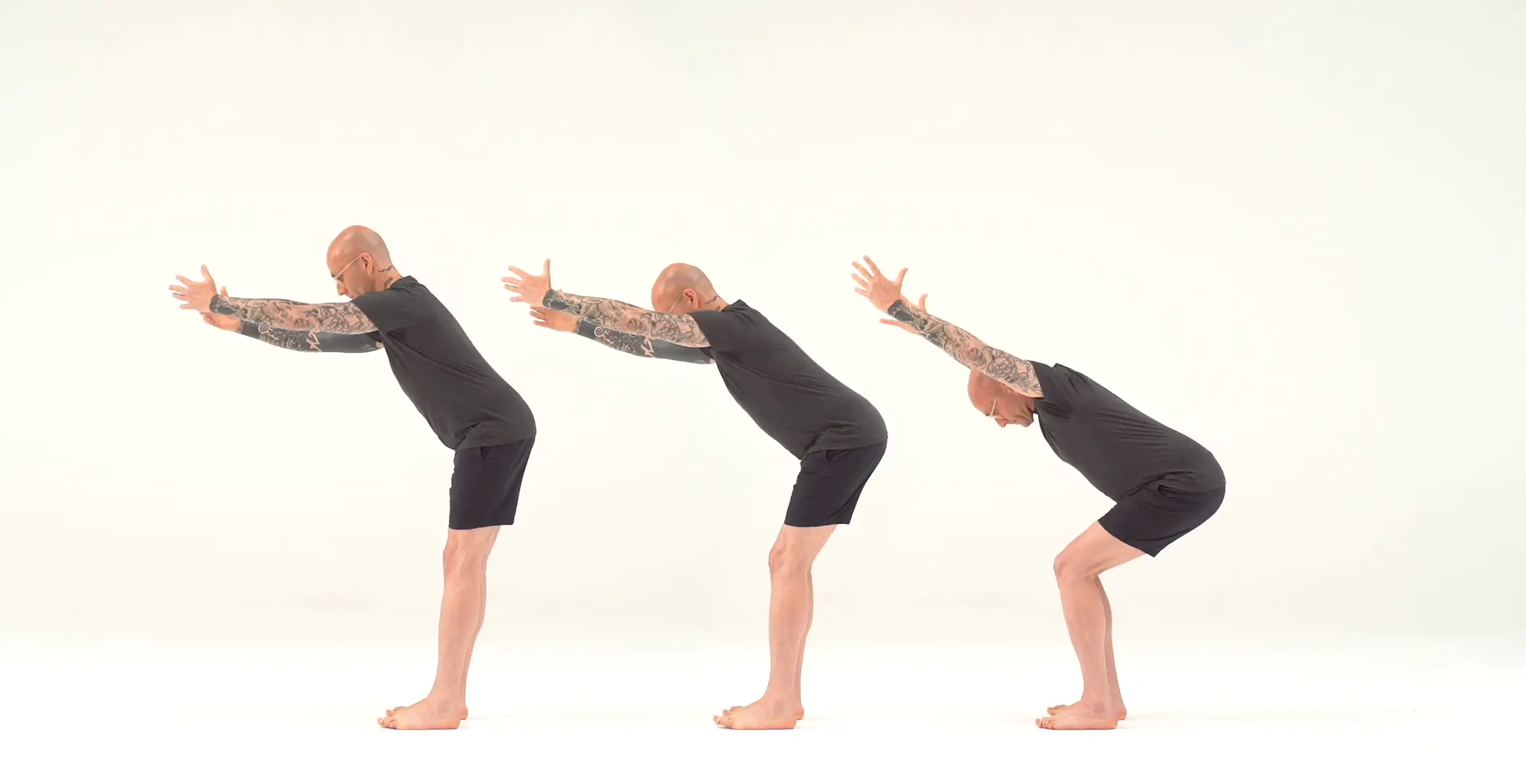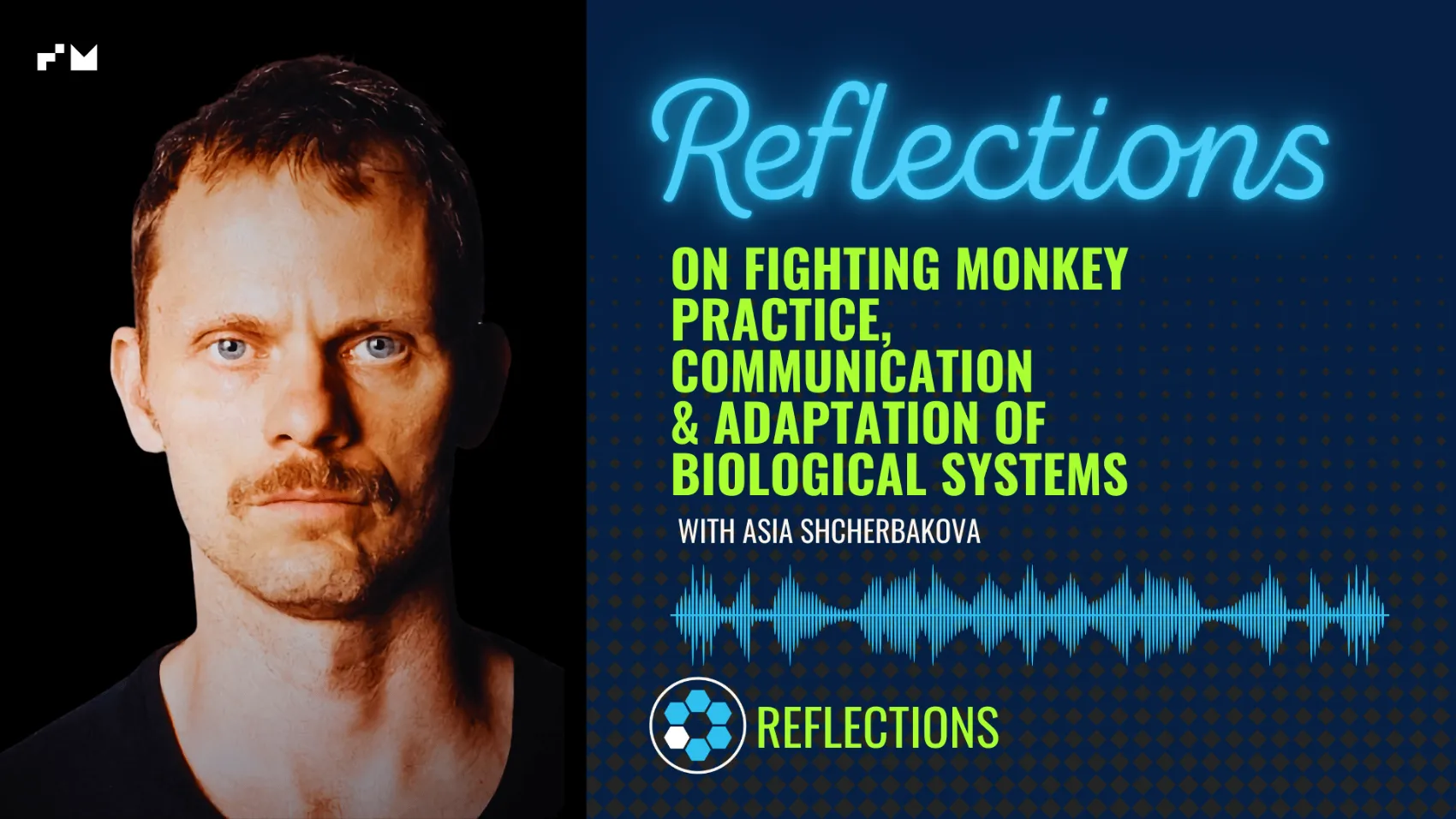After looking through our website, you may be naturally wondering, “What exactly is Baseworks and what effects of Baseworks can I expect? And, with my busy schedule, when can I expect to feel the effects?” The Baseworks Method combines physical, cognitive, and behavioral elements, providing a well-rounded approach to training that can bring about a wide range of positive effects, from improved strength, mobility, flexibility, and movement control to better body awareness, emotional regulation, stress regulation, memory, overall well-being, and more.
While some changes may be immediately noticeable after just one session, other benefits may take longer to appear. Your experience with Baseworks will also be influenced by your starting point, goals, and mindset towards practice. Having a clear idea of what you are trying to achieve may help consolidate your efforts and speed up the progress.
Therefore, to provide a better understanding of the potential outcomes, I will be summarizing the feedback we have received in the form of video testimonials we collected from our students in Tokyo. Stay tuned for the release of some of the video material in the near future.
Commonly Reported Effects of Baseworks
(1) Physical abilities
Of course, everyone mentioned the effects of Baseworks training on their physical abilities. Through the practice, people often notice an increase in strength, core strength, flexibility, balance, mobility, improved posture, and control over their movements. Many also mention how their bodies become more aligned and symmetrical.
Our approach to strength is based on the principle of “Distributed Activation,” which engages muscles throughout the entire body during any movement. This method is especially beneficial for beginners as it provides instant strength, allowing to perform movements that may have previously been too challenging. Additionally, our protocol focuses on gradual progression with the principle of “Intensity Modification,” ensuring that yout don’t exhaust yourself during physically demanding movements. This gentle yet effective approach helps build strong muscles to support daily life and other athletic activities.
When it comes to flexibility, many people praise the Baseworks Practice for its effectiveness and comfort compared to other options. Our movement patterns intended for developing flexibility overlap with certain aspects of PNF (Proprioceptive Neuromuscular Facilitation) stretching techniques, but with a more holistic approach. Rather than “hacking” your reflex circuits, our techniques teach you how to consciously control the muscles to achieve elongation according to your intention. We also prioritize avoiding overexertion to prevent discomfort, stress, and muscle damage. As a result, you can expect to increase flexibility without experiencing excruciating DOMS (delayed onset muscle soreness) when practicing Baseworks correctly.
(2) Performance in other practices
Many people report significant improvements in their performance and understanding of various movement practices after incorporating Baseworks into their routine. From running and swimming to golf, tennis, kickboxing, martial arts, ball games, dance, yoga, and gym workouts, the benefits of Baseworks clearly extend beyond its own practice.
Many have noticed better recovery and reduced pain in other sports, as the muscle activation techniques and the “Intensity modification” principle of Baseworks can be easily applied to other physical activities. This not only leads to a more comfortable and manageable movement execution but also minimizes the risk of injury.
Moreover, the Baseworks approach of embracing one’s unique condition and modifying exercises based on individual needs seems to have a significant impact on exercise in group settings. People no longer feel pressured to try and mimic the instructor or match the intensity of others, but rather learn to listen to their bodies and adjust accordingly. This mindset is often carried over to other practices, allowing people to adapt their exercise intensity and incorporate Baseworks muscle co-activation techniques to make the movement execution more comfortable and manageable.
Better understanding of other practices comes from the overall increase in body awareness (see the next point), but also from following the principles of Gridlines & Symmetry and Fixing-Separating-Isolating, which work towards breaking down complex compound movements into consciously accessible building blocks (fundamental movement vocabulary.)

(3) Body awareness and Understanding the body
Many people notice that Baseworks gave them tremendous amounts of body awareness they did not have before. They appreciate that Baseworks helps them to learn about their bodies. Some people explicitly say that in Baseworks they “actually learn,” while in other places (gyms, other exercise systems) they just go through the motions. Many people like that Baseworks breaks things down, and there is consistency and clear logic as to why we do things the way we do.
When Patrick initially developed Baseworks, one of his main goals was to help people better understand their bodies. To achieve this, we use both top-down and bottom-up strategies. Our top-down approach focuses on understanding and analyzing personal limitations, while the bottom-up mechanisms utilize movement patterns and spatial goals to increase sensory information available to consciousness. In combination with consistency of performance and attention allocation, this is a recipe for optimal neuroplasticity.
Even professional athletes and dancers have acknowledged the impact of Baseworks on their body awareness and understanding of the body. This serves as an example of how our concept of “Physical Intelligence” goes beyond the traditional “Bodily-kinesthetic intelligence” in the theory of multiple intelligences. While high Bodily-kinesthetic intelligence may indicate proficiency in using the body, the concept of “Physical Intelligence” is wider and also incorporates awareness and understanding of the body. As we develop and internalize skills, we often lose conscious awareness of their execution, but Baseworks helps to bridge this gap.
(4) Body maintenance and conditioning
Another often reported advantage of Baseworks is its ability to maintain and condition the body. This is particularly beneficial for dancers and other individuals who regularly engage in high-impact physical activities. In addition to using Baseworks to improve their movements and reduce impact in other activities, many also use it as a measure of their body’s current state and level of self-awareness. Satoko wrote an insightful article about this idea, talking about how Baseworks can serve as a litmus test for self-awareness.
Baseworks is not necessarily a gentle “take-a-break” kind of practice. As mentioned above, people do get really strong from Baseworks. However, on days when one may not feel their best or have an injury, Baseworks offers the opportunity and tools to continue staying active at a comfortable and appropriate intensity.
(5) Reduction of tension and pain
Another often mentioned transformative effect of Baseworks is its ability to reduce muscle tension, tightness, and pain.
Through an understanding of appropriate exercise intensity (Point 2) and muscle development (Point 1), Baseworks enables individuals to overcome post-exercise pain and make daily activities easier. These 2 points together explain some of the common comments we receive about no longer experiencing pain.
But Baseworks has even more to offer. It has many unique techniques to address tight shoulders, sore backs, sciatica, and other common muscle tension issues that arise from modern lifestyles, especially from prolonged computer work.
If you’re fascinated with fascia, you will likely enjoy the Baseworks Micromovements. If you’re into “tensegrity-based” tension reduction, you will appreciate our structured spinal movement sequences.
But even more importantly, Baseworks teaches to use muscles consciously. So, if there is some residual tension somewhere in your muscles, it will get “wiped out” by your intention. You know how sometimes you cannot eject a disk because “some application is using it”? Metaphorically speaking, with Baseworks, you will “kill” the unwanted processes running in the background, contract the muscles according to your intention, and then when you decide to “eject” and stop using the muscles, they will be more relaxed.

(6) Mood, energy, sleep, and other psychological effects
Baseworks helps improve sleep, mood, and relaxation. People feel more refreshed and energized (but not euphoric) when they finish a session. Some people even say that it feels like Baseworks puts them into a different brain state. Many people report improved confidence and overall well-being. They also say that Baseworks helps to reduce stress and fatigue, provides mental rest, promotes a sense of relaxation and happiness.
Generally speaking, a Baseworks session is a moderate-intensity exercise that adaptively becomes low-intensity whenever your condition requires. There’s extra care not to hyperactivate the nervous system. Although, there is a tendency in the fitness industry to promote the endorphin-mediated euphoric state as the marker of “successful exercise”, in Baseworks, we take a different approach. As endorphins are co-released with the activation of the HPA axis (the “bad” stress), we generally choose a strategy to avoid this.
While some people may be able to quickly bounce back from an overly sympathetic state and enter deep into a rest-and-digest mode, this is not the case for everyone. So while we are not saying that training regimes that bring you into a hyper-sympathetic state are always harmful, in Baseworks, we want to make sure that everyone, with or without experience or understanding how physical practice affects them, is going to benefit from the practice physiologically. And you can also read Patrick’s article “The Self-Regulation Wake-Up” to get another, more general perspective on this.
So, the state of mind you get from Baseworks is not your typical post-workout bliss. It is a much more calm, focused, relaxed state that lasts longer.
(7) Mindfulness
Many people report improved mental and emotional awareness and control, leading to better emotional regulation and the ability to handle challenging situations. They say that the practice encourages mindfulness and a focus on the present moment, allowing them to listen to their bodies and adjust their behavior accordingly.
Some people say they cannot “meditate” because there is “nothing happening.” The body awareness developed through Baseworks provides the material for the mind to focus on when it is encouraged to focus on some internal aspects. So, doing Baseworks may help your other mindfulness practices.
Baseworks requires a lot of attentional control. So, it does train attention. Moreover, the attention in Baseworks is ‘distributed,’ a certain quality that is not very uncommon. So, if you struggle with “meditation” because you cannot control attention, you may find that Baseworks will help with that.
Being in the moment also comes from the routine practice in Baseworks of checking the current condition and noticing internal signals and states. As we use natural breathing as a feedback modality to control exertion, this also builds a habit to pay attention to your breathing all the time. So, the skills developed for execution of movement tasks in the Baseworks Practice, carry over into daily life, where you may find that you become more “present” and more aware of your emotional states (that often manifest as agitated breathing or bodily sensations).
(8) Stress regulation
Many people noticed that Baseworks takes a holistic approach to well-being by emphasizing the importance of maintaining balance and not pushing oneself beyond limits. They learn this approach in class and then apply it to other areas of their lives.
Stress, as we know, occurs when there is an excess of something. While some stress may come from circumstances beyond our control, much of it stems from (A) not realizing the extent to which we are pushing ourselves and (B) continuing to push even after recognizing it is too much. The first issue can be addressed by cultivating body and emotional awareness, while the second is a societal problem. Many people feel pressure to constantly push themselves, and when they come to Baseworks and are told to listen to their bodies and not push too hard, they are often surprised. This new perspective allows individuals to realize that it is okay to not constantly exceed their limits and that taking care of oneself is a priority.
This idea of being mindful and intelligent about how much effort is put into something at any given time is a valuable skill that can be applied beyond Baseworks. Despite its simplicity, many people highlight it as one of the most transformative lessons they have learned from Baseworks. This is a reflection of the societal pressure to constantly push ourselves and the importance of breaking away from this pattern.

(9) The Emergent Outcome
I’d like to emphasize that everything above consists of the most general comments we get from our students. The point (9) is going to be about my own experience.
If I were to write about my own gains from Baseworks, I would say that the biggest things I gained (on top of all the conventional strength, flexibility, and control) would be (1) the feeling of my muscles being an extension of my thoughts, (2) better spatial working memory, (3) a persistent quality of spatial awareness I can only describe as “spatial music.” Or, recently, I found a term “counterfactual richness,” which might have something to do with this experience. Essentially, it feels like I am aware of hundreds of spatial points associated with my body, and I can feel the patterns among them when I move, but I can also imagine these patterns without moving. Walking feels like dancing, and not moving also feels like dancing. I feel entertained all the time by the spatial position of my body.
This newfound quality of experience is something I never knew existed before I started practicing Baseworks. I often wonder if this is how dancers or advanced martial artists feel all the time. However, in my lifetime, I had never come across any information discussing this achievable and trainable quality of experience. I am unsure of how common this is, but for me, it was an unexpected and gratifying outcome.
I was initially not seeking this particular experience, but I ended up attaining it nonetheless. We often refer to this type of progress as an “emergent outcome,” where the pursuit of one goal leads to an even more remarkable result.
When it comes to gains in strength, flexibility, and relaxation, these are relatively easier to achieve. However, physical and perceptual skills take more time and effort. It’s comparable to learning a musical instrument or a new language. These changes require consistent training and dedication, and may not manifest overnight.
Therefore, having clear goals and realistic expectations, particularly in terms of timelines, is crucial. In addition, I highly recommend reading Patrick’s article “Why You May Want to Commit,” which discusses how jumping from one activity to another may hinder potential realizations and gains that require time and effort. It’s essential to stay committed and allow yourself the time and effort needed for growth and progress.
(10) A Structured Path to Progress
Going back to the things people often tell us, I would like to mention one more thing. People often say that they like that Baseworks has a clear structure on how to progress, that they like realizing things. Some people say that noticing progress brings self-confidence. Some people say it brings “freedom.”
It’s true, Baseworks is quite detailed and success is not solely based on physical ability. Rather, it’s about being aware of your movements and adapting accordingly. This means that in one Baseworks session, you could potentially have hundreds or even thousands of micro-tasks, each one offering a sense of accomplishment when completed. A similar approach is often recommended for conquering procrastination, as breaking big tasks into smaller ones makes them more manageable.
By focusing on these small tasks, it becomes much easier to see progress on a daily basis. It is gradual, but when you break things down, patterns emerge, and with time, you begin to see your progress as a cohesive system. Not only does this make the journey more enjoyable, but it also helps you become more immersed in the process. And it’s true, when we understand something and see the whole picture, it gives a sense of confidence and freedom.
Long ago, I heard Tai Lopez say something that has always stuck with me:
“A lot of the problems in the world are ones of not properly incentivising, and if you want to change the world, start with changing yourself and become a reward king.”
By saying “reward king,” he, of course, refers to the ability to get rewarded with the “dopamine hits” from the smallest things. And that’s exactly what Baseworks provides – a fantastic framework for self-reward and progression.
Conclusion
Although the transformative effects of Baseworks are unique and vary depending on personal goals, people from diverse backgrounds achieve them consistently.
Developing physical and perceptual skills, which involves rebuilding maps in the brain, may require months or even years of training. While this may seem like a significant time commitment, it is comparable to other forms of learning like getting a degree or learning a new language.
With the structure and approach of Baseworks, positive changes become easier and new possibilities arise and unfold with each micro-progress and micro-realization.











